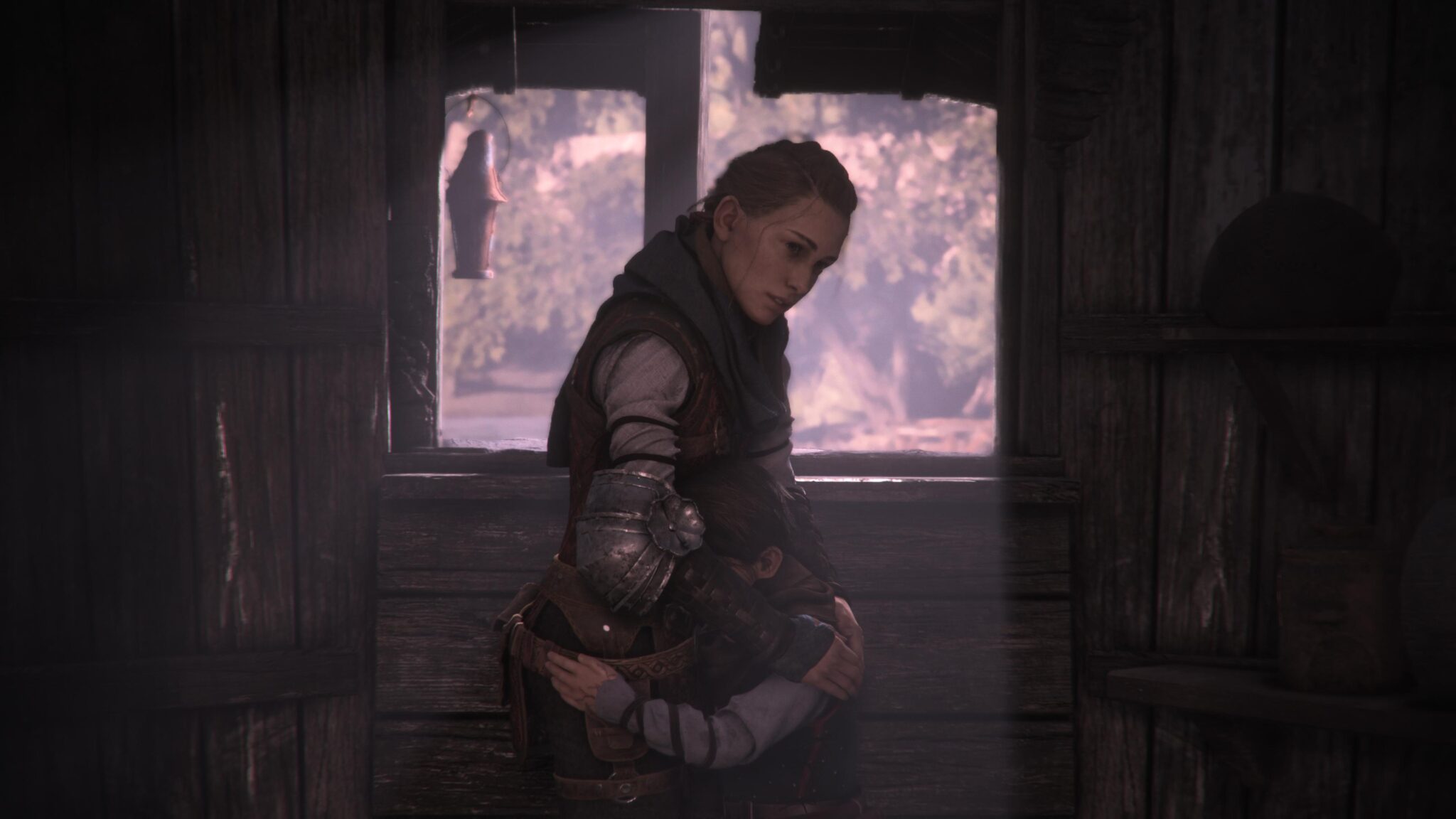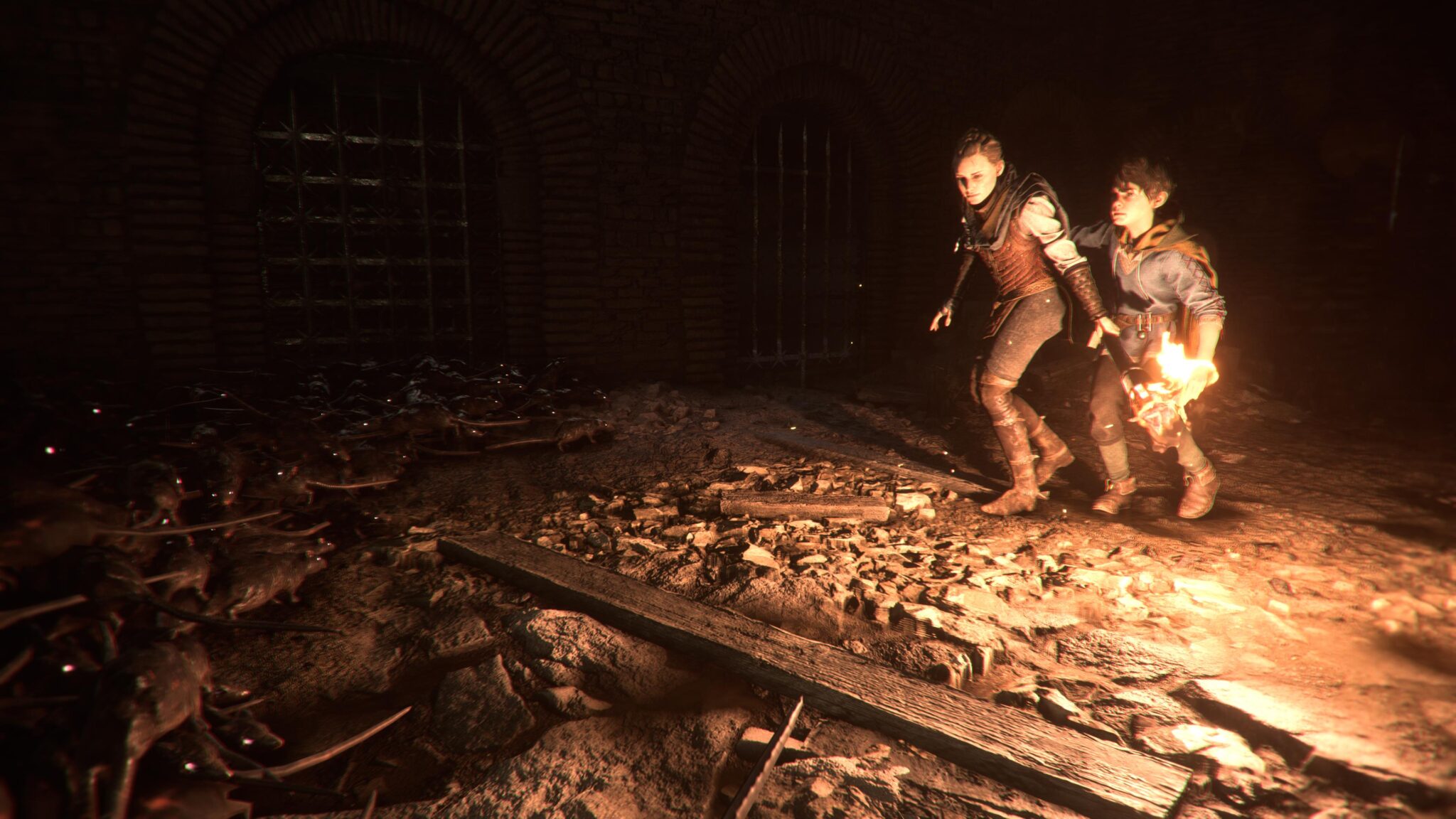A Plague Tale: Requiem Review – A delightful game of hide and squeak
It shouldn’t be a surprise to you that A Plague Tale: Requiem is one of the best games to come out of 2022. It’s predecessor A Plague Tale: Innocence is one of my personal favourites, despite it being a bastion of misery with very little joy in sight. The reason for that being a simple one: the focus on Amicia and Hugo’s relationship in the face of seemingly insurmountable odds. If you feel the same, then guess what? You’re going to love the sequel.
Much like the original, A Plague Tale: Requiem eases you into a sense of security as it sets the scene. It’s based six months after Innocence, and the world seems a little calmer on the surface – a blessing considering the horrors Amicia and Hugo had to deal with before. The siblings are joined by their mother Beatrice and alchemist Lucas, their friend and ally from the previous game. You’ll see quite a few familiar faces actually, and each one has a visual upgrade so that they not only look better graphic-wise, but fashioned in a way that suits the volatile experiences they’ve faced. They look older, more scarred by what they’ve seen.
It isn’t just our main protagonists and companions that look good. Innocence was a game that made the carnage of rot, gore and blood that soaked the environment look beautiful, but A Plague Tale: Requiem does all that and more by simply allowing itself to use a colour wheel that isn’t just full of black, grey, green and brown. It’s a lot more visually distinctive than its predecessor, leaning into warmer colours to highlight something else that feels new: people!
Yes, there were arguably plenty of people back in Innocence, but truly? I don’t think mass graves really count, do you? Instead of death being around every corner, players do get to experience spaces in the world where people aren’t just living, but thriving. They have festivals, play games, and there are even farm animals you can pet! And you don’t have to kill these ones! Already that’s a big plus for me, someone who absolutely sobbed their heart out after the pig scene in Innocence..
Exploring and witnessing towns full of people is a big change, and while I can see why some players may feel like it takes away from the tension of death being around every corner, I wholeheartedly beg to differ. The cursed Macula that runs through Hugo’s blood was delayed from corrupting him fully in Innocence, but its dark power serves as a constant reminder that even in times of peace and prosperity, the rats and the plague are always a mere breath away. It made even the happiest of moments feel like I was walking on a knife’s edge.
Speaking of rats. In A Plague Tale: Requiem they are bigger, better and even deadlier than before. You used to have some sort of safety net by being able to climb and get away from these deadly pests, but guess what? Now they are much faster and can climb up walls, meaning that even if they are down below and you’re in the darkness, they can scramble up and feast on your flesh before you even know what’s hit you.
But it isn’t all bad for our beloved siblings. The pro side of the rats being more dangerous is that Hugo is able to take their fierce nature as a boon, controlling these pests to leave swaths of enemies behind in their wake. It works even better if you take advantage of Amicia’s arsenal too, a combination of ranged weapons like the slingshot, mixed with the powerful potency of alchemy that was so useful in Innocence. I found myself laughing with glee as I slung a rock of Odouris (an alchemical component that douses fire) at enemy torches, only to mop them up with Hugo’s rats. There is a downside to this though. The more you use the rats, the more damage it does to his psyche and control. Sorry about making you think you’re a monster, buddy.

Which brings me onto my next point: combat is so much smoother in this sequel. In Innocence I often felt like I had to be stealthy because no matter how much I saved up my materials, both Amicia and Hugo were utterly weak in the face of the Inquisition that hunted them. In the sequel however, the siblings are older, wiser and as messed up as it is to say, so much more experienced with doing what it takes to survive. So it makes sense, both through gameplay and through A Plague Tale: Requiem‘s narrative, that the combat is much grittier this time around.
But what really impressed me was the game’s unwavering approach to the aftermath of the affects Innocence had on the siblings. Often it felt like the first game veered too close into torture porn, with the brief occasion of flower picking and talking to the friends you made along the way being the only respite you got. So, as the kids say, both Amicia and Hugo are kinda going through some things right now. Still, the sequel doesn’t go that far and actively pulls away from being too traumatizing, though that doesn’t stop there from being plenty of instances where the game happily suckerpunches you in the chest, so don’t get too comfy. Amicia in particular feels the burden of not just a 16-year-old girl who has witnessed death at every corner and is emotionally unprepared for the trauma of that, but the weight of being her brother’s protector in a world that wants him dead. That means killing, and so much of it is senseless in the grand scheme of things. Even Hugo, a literal child, gets his hands bloody and must deal with the despair that comes with that. The performance from both Charlotte McBurney and Logan Hannan is emotionally devastating and deeply moving, and they stand shoulder-to-shoulder with even the most prestigious of voice actors out there.
There is so much to like about A Plague Tale: Requiem: it’s new characters and returning faces, the improved visuals, the sublime combat and the masterful storytelling that ties off both Amicia and Hugo’s story quite nicely.
But what ultimately lets it down from being a perfect game in my eyes is that, at times, the scope of what Asobo wants to focus on can make it feel like the story drifts from place to place. The start of the game in particular can feel very slow and incohesive, pulling and pushing players from place to place with the objective constantly changing.
Still when it gets its feet, A Plague Tale: Requiem really is the perfect sequel and I’d happily argue that it’s a game with much more confidence in itself than Innocence. If this is the last game in the series, then fans should be content that it finished with a bang, and not a whimper.
Score: 4/5
A copy of A Plague Tale: Requiem for PS5 was provided to Gayming Magazine by PR.







